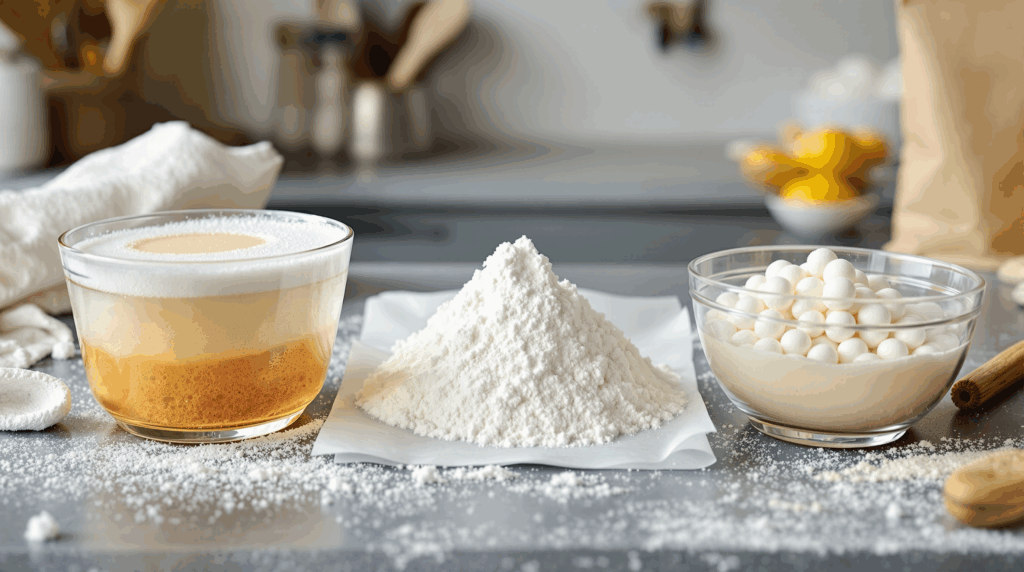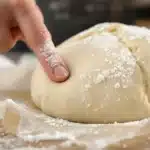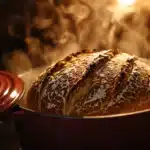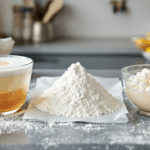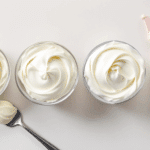Imagine pulling a golden, crusty loaf of bread from the oven, its interior airy and light. Picture a stack of fluffy pancakes, or a birthday cake rising majestically. What transforms dense doughs and flat batters into these voluminous, textured delights? The magic lies in leavening – the process of introducing gas bubbles that create lift and lightness. Aspiring bakers quickly learn that mastering leaveners, the agents responsible for this transformation, is fundamental to success.
While we often associate leavening primarily with the biological wonder of yeast, the baker’s toolkit also includes powerful chemical agents like baking soda and baking powder. Each type works differently, has specific needs, and produces distinct results. Understanding these leaveners – how they function, what makes them thrive or falter, and how to choose the right one for the job – is akin to learning a secret language. It’s about becoming a “Yeast Whisperer,” someone who can coax the perfect rise from dough, but also understanding the quick, reliable chemistry of powders and sodas. This guide will delve into the science of the rise, explore the fascinating world of yeast, demystify chemical leaveners, and equip you with the knowledge to confidently tame these essential ingredients.
The Science of the Rise: What is Leavening?
Leavening aims to create pockets of gas (usually carbon dioxide, CO2) within doughs and batters before or during baking. These bubbles are contained by a structure (gluten in bread, eggs/starches in cakes) and expand when heated (along with steam from water content). As the structure sets around these expanded bubbles, the baked good increases in volume and develops a lighter, porous texture. Without leavening, most items would be dense and flat.
There are three main types of leavening:
- Biological Leavening: Uses living microorganisms, primarily yeast, through fermentation. Takes time, develops complex flavors.
- Chemical Leavening: Relies on chemical reactions (baking soda needing acid, baking powder containing acid and base) to produce CO2 quickly.
- Physical/Mechanical Leavening: Incorporates air (creaming, whipping egg whites) or uses steam (puff pastry, popovers) which expand upon heating.
Our focus here will be primarily on biological and chemical leaveners.
Meet the Microbe: Understanding Yeast
The yeast mainly used in baking is Saccharomyces cerevisiae, a single-celled fungus. It performs fermentation in dough, converting sugars into the byproducts that make bread rise and taste unique.
How Yeast Works: The Magic of Fermentation
- Food Consumption: Yeast consumes simple sugars, either added directly or broken down from flour starches by natural enzymes.
- Metabolic Byproducts:
- Carbon Dioxide (CO2): The gas that inflates the dough’s gluten network, causing the rise.
- Ethanol (Alcohol): Contributes significantly to bread’s characteristic aroma and flavor (mostly evaporates during baking).
- Flavor Compounds: Other acids and esters add complexity not found with chemical leaveners.
What Yeast Needs to Thrive (and What Hinders It)
Yeast requires specific conditions:
- Food: Simple sugars.
- Warmth (Temperature is CRITICAL):
- < 40°F / 4°C (Fridge): Dormant/Very slow.
- 50-70°F / 10-21°C (Cool): Slow activity.
- 75-95°F / 24-35°C (Optimal): Most active range. Ideal dough temp often 75-80°F / 24-27°C.
- 100-115°F / 38-46°C (Warm): Very active; used for proofing ADY. Risk of off-flavors if prolonged.
- > 120°F / 49°C (Hot): Yeast starts dying rapidly. >140°F / 60°C kills it. Use a thermometer!
- Moisture: Needed for activity and movement.
Factors Inhibiting Yeast:
- Salt: Controls fermentation speed and tightens gluten (use 1.8-2.2% of flour weight). Direct contact can kill yeast; mix salt with flour first.
- Too Much Sugar: Slows yeast via osmosis. Osmotolerant yeast helps in sweet doughs.
- Certain Fats: High amounts can coat yeast cells.
- Other Inhibitors: High concentrations of cinnamon, some preservatives.
Taming the Wild Ones: Types of Commercial Yeast
Different processing affects usage and shelf life.
Active Dry Yeast (ADY)
- Characteristics: Larger, dormant granules needing rehydration.
- How to Use: Must be “proofed.” Dissolve in warm water (105°F – 115°F / 40°C – 46°C) with a pinch of sugar. Wait 5-10 min for foaming/bubbling (proves it’s alive). Add to ingredients.
- Shelf Life: Long unopened. Refrigerate/freeze after opening. Proofing confirms viability.
- Pros/Cons: Reliable once proofed; requires extra step; sensitive to proofing temp.
Instant Yeast (IDY / Rapid-Rise / Bread Machine Yeast)
- Characteristics: Finer granules, absorbs water quickly.
- How to Use: No pre-proofing needed. Mix directly with dry ingredients. Add liquids warmed appropriately (check package, often 120°F-130°F / 49°C-54°C if mixing dry).
- Subtypes: Standard IDY (reliable, good flavor) and Rapid-Rise/Bread Machine (faster, contains conditioners, potentially less flavor development).
- Shelf Life: Good unopened. Store airtight in fridge/freezer after opening.
- Pros/Cons: Convenient, reliable, vigorous; Rapid-Rise might sacrifice flavor complexity.
Fresh Yeast (Cake Yeast / Compressed Yeast)
- Characteristics: Moist block (~70% moisture), crumbly, yeasty smell.
- How to Use: Crumble and dissolve in lukewarm liquid (~80-90°F / 27-32°C) or crumble directly into dry ingredients.
- Shelf Life: Very short (1-2 weeks). Must be refrigerated. Look for moist, uniform appearance.
- Pros/Cons: Potentially superior flavor/aroma; very perishable, harder to find, needs conversion.
Osmotolerant Yeast
- Characteristics: Instant yeast strain effective in high-sugar doughs (>10-12% sugar).
- Why Needed: Resists dehydration caused by high sugar concentration.
- Usage: Use like regular IDY. Essential for rich, sweet doughs (brioche, challah, doughnuts).
- Availability: Baking supply stores/online.
Yeast Conversion Rates (Approximate & Best by Weight):
- 1 packet dry yeast (ADY or IDY) = ~2 ¼ tsp = ~7g (¼ oz).
- IDY vs. ADY: Use 1:1.
- Dry vs. Fresh: Weight of Fresh ≈ 2.5-3x Weight of ADY OR ≈ 3-3.3x Weight of IDY. (Roughly: 0.6-oz cube fresh ≈ 7g packet dry).
Beyond the Packet: Sourdough Starters (Natural Leaven)
- What it Is: A living culture of wild yeasts and lactic acid bacteria (LAB) in flour/water.
- How it Works: Wild yeasts provide lift (CO2). LAB produce lactic and acetic acids, adding complex tangy flavor, strengthening dough, and improving shelf life.
- The Process: Requires regular “feeding” and involves longer fermentation times than commercial yeast.
- Pros/Cons: Unmatched flavor complexity; requires maintenance, longer/less predictable times, steeper learning curve.
The Chemical Crew: Baking Soda & Baking Powder
Provide rapid leavening for cakes, cookies, quick breads.
Baking Soda (Sodium Bicarbonate – NaHCO₃)
- Characteristics: An alkaline base.
- How it Works: Needs moisture + an acidic ingredient to react and release CO2. Reaction starts immediately upon mixing.
- Acids: Buttermilk, yogurt, brown sugar, molasses, honey, lemon juice, vinegar, cream of tartar, natural cocoa, fruit purees.
- Usage: Use only with sufficient acid. Too much causes soapy taste. Promotes browning.
Baking Powder (The All-in-One Leavening System)
- Characteristics: Mixture containing: Sodium Bicarbonate (base), Powdered Acid(s), and Inert Filler (cornstarch – prevents premature reaction).
- How it Works (Double-Acting): Standard type.
- Fast-acting acid: Reacts when moistened (initial lift).
- Slow-acting acid: Reacts when heated in oven (main lift).
- Provides reliable rise.
- Usage: Use when recipe lacks sufficient natural acid for baking soda alone.
- Checking Freshness: Test potency by stirring ~½ tsp into ~1/3 cup hot water; vigorous bubbling means it’s active. Store tightly sealed (lasts 6-12 months).
Why Use Both Soda and Powder? Often used together to:
- Achieve sufficient overall lift.
- Neutralize acid flavors while still getting rise.
- Utilize soda’s browning benefits with powder’s reliable lift.
Leavening Troubleshooting: Why Didn’t it Rise?
Common causes for flat results:
Yeast Issues:
- Dead Yeast: Expired or killed by heat. Fix: Check dates, proof ADY, use thermometer for water (105-115°F for proofing).
- Incorrect Water Temp: Too hot or too cold. Fix: Use thermometer.
- Salt/Sugar Shock: Inhibited yeast. Fix: Measure accurately, mix salt w/ flour first, use osmotolerant yeast if needed.
- Insufficient Kneading (Bread): Weak gluten. Fix: Knead properly.
- Insufficient Proofing Time: Not enough gas produced. Fix: Allow proper rise time/volume increase.
- Proofing Temp Too Cold: Slowed yeast. Fix: Find warm spot (~75-80°F).
Chemical Leavener Issues:
- Expired Leavener: Lost potency (esp. baking powder). Fix: Test powder, replace if old.
- Incorrect Measurement: Too little used. Fix: Measure accurately.
- Acid Imbalance (Soda): Not enough acid in recipe. Fix: Check recipe ingredients.
- Over-mixing Batter (Quick Breads/Cakes): Developed too much gluten, released gas too early. Fix: Mix only until combined.
Conclusion: Conducting the Rise Symphony
Leavening is baking’s transformative magic. Understanding your agents – living yeast (Active Dry, Instant, Fresh, Sourdough) and chemical partners (Baking Soda, Baking Powder) – is paramount. Respect their needs, especially temperature. Measure accurately, store properly, test viability, and understand their interactions.
Becoming a “Yeast Whisperer” means controlling the rise through knowledge and observation. Recognizing healthy fermentation or chemical reactions, and troubleshooting failures, builds confidence. Embrace the science. With practice and this foundational knowledge, you’ll achieve airy lightness in cakes, magnificent volume in breads, and perfect puff in pastries – a giant leap in your baking journey. Go forth and raise some dough!

